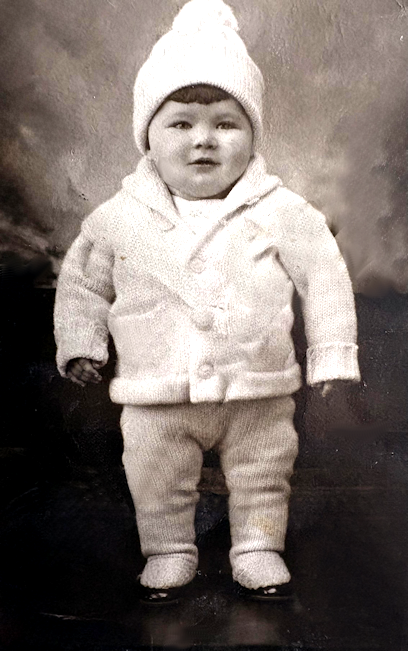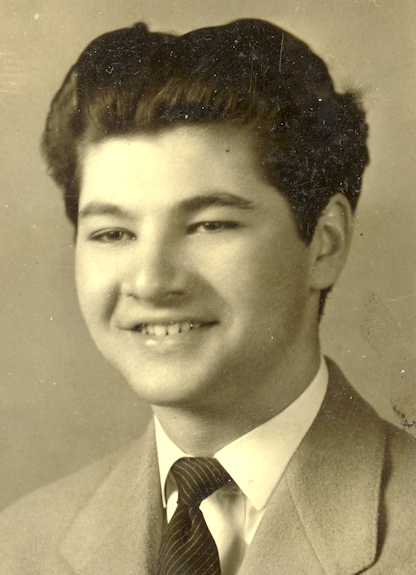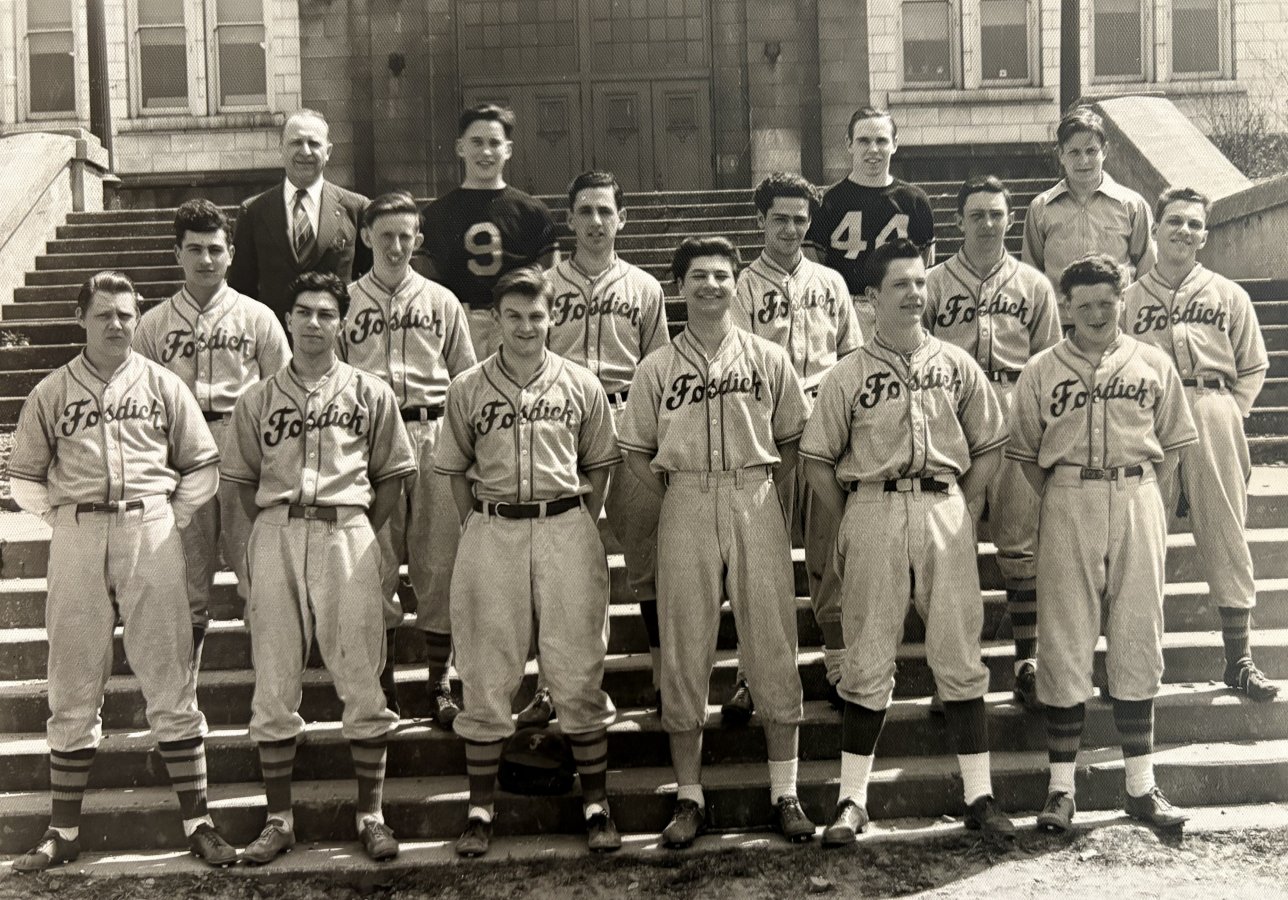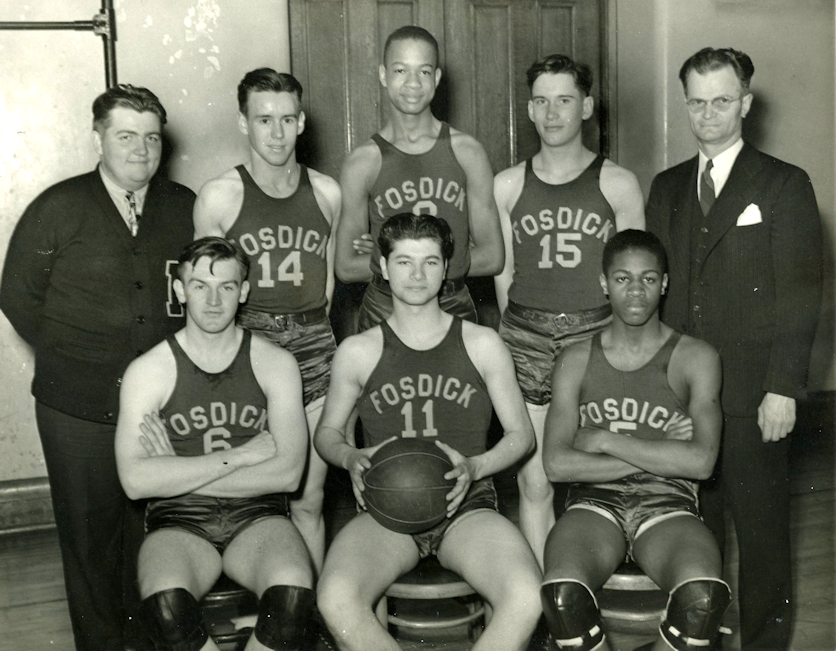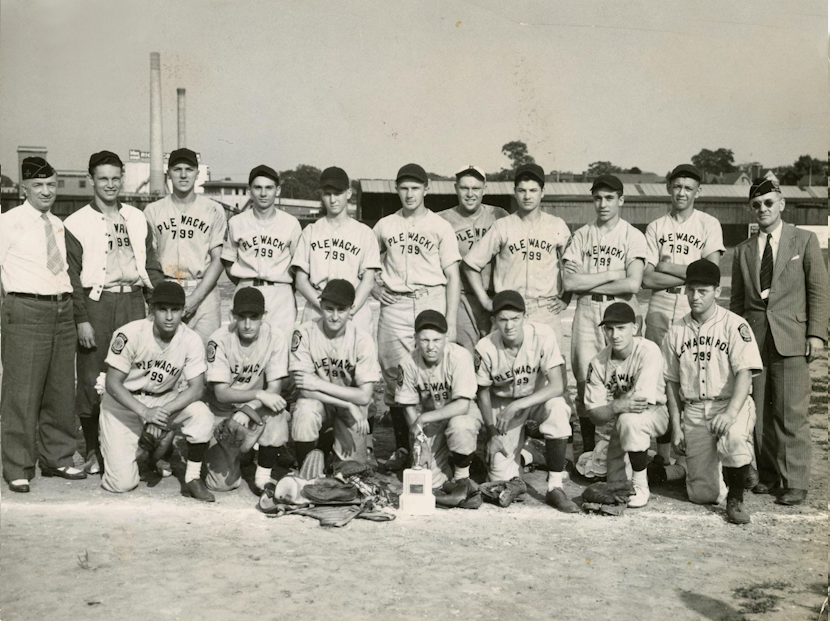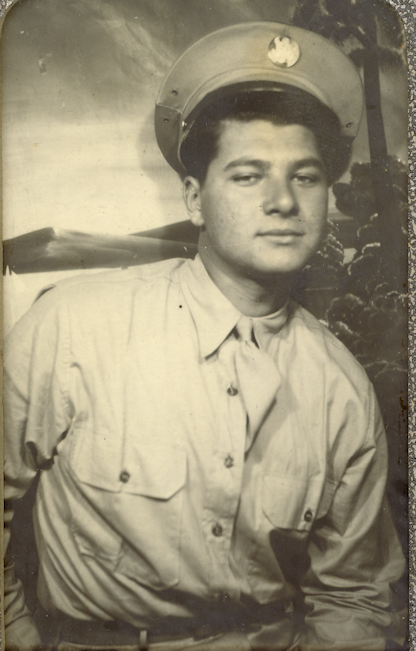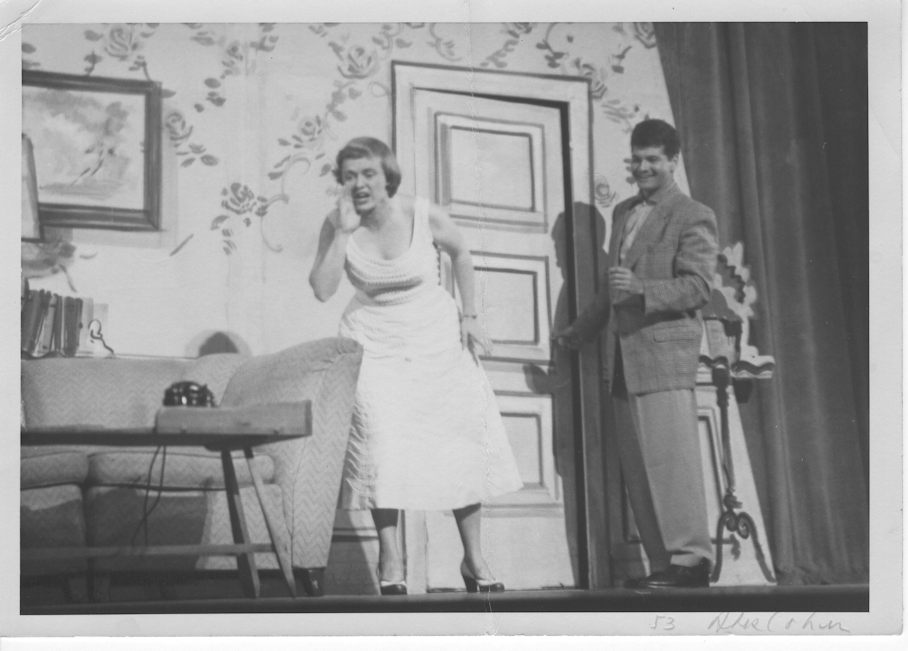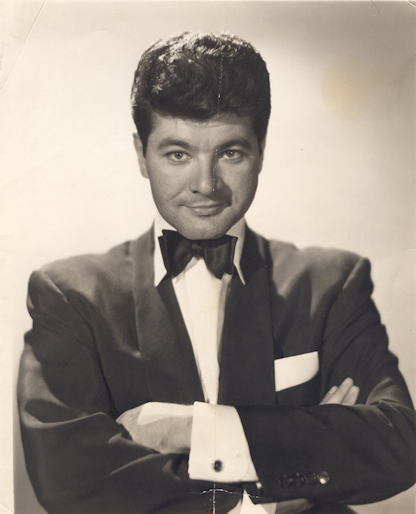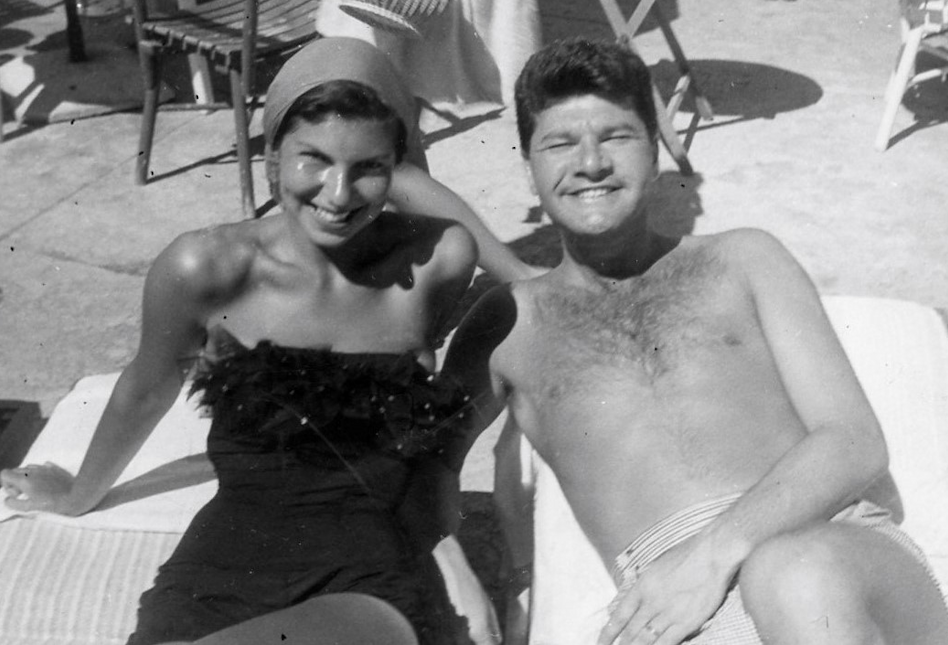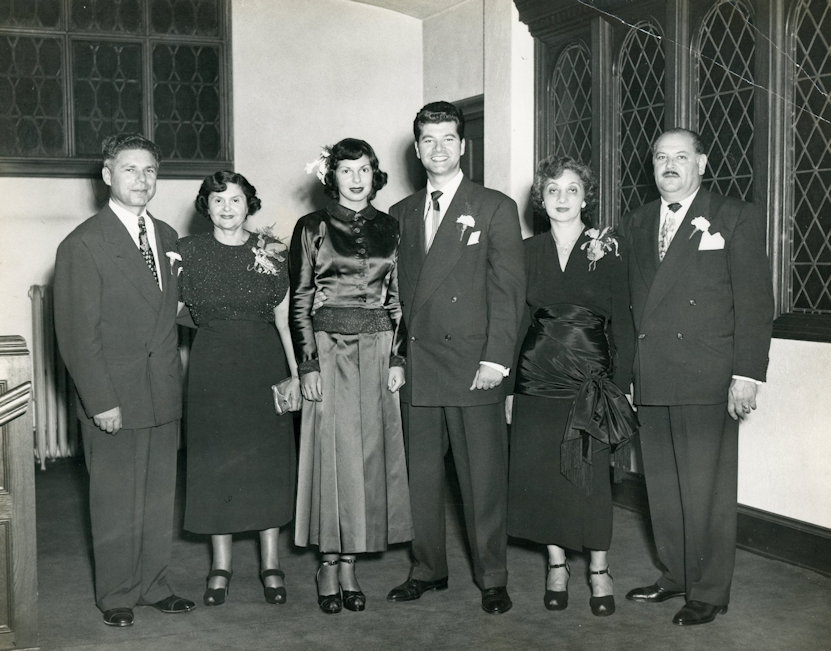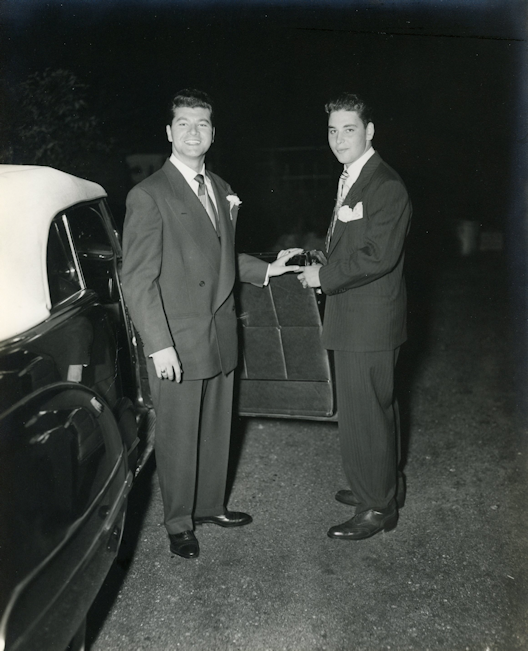Born December 1, 1923, in Buffalo, NY, to Eddie and Anna (Schrutt) Schulefand, Richard (Richy) Schulefand’s family soon moved to Lackawanna, a working-class steel town.
His father was a haberdasher. “The people I knew in Buffalo are amazed that I ever became an entertainer. As a youngster, I was one of the shyest kids you ever saw. I was a real loner. I never felt comfortable with people. Baseball
was my only interest. I was never without my black baseball cap, and I used to wear it way down over my eyes. I think that’s why I remember so little of my childhood. I never saw anything.” (Phillip Minoff, Cue, November 14, 1953).
He recalled that there wasn’t much communication at home. “Nobody spoke at home. We had to look at each other all the time. Silence was a way of easing tension. There was no intellectual discussion, no TV. You ate and left the table.”
(Lawrence Christon, Los Angeles Times, April 26, 1987). Shawn didn’t have friends visit because his mother thought it would dirty up the floors. He spent most of his childhood playing baseball, always with his ball and glove in hand.
Shawn had quite an athletic background. He attended East and Masten Park High Schools in Buffalo, NY, where he excelled in baseball, track, football, and basketball (serving as team captain). As a freshman, he pitched for the Buffalo
American Legion baseball team, which won the state championship in Rochester. His team eventually lost in the national finals in Delaware.
He attended the University of Buffalo for one year as a Physical Education major, playing on the baseball, basketball, and track teams. Former teammates remembered him as a talented athlete, but his true love was entertaining the team at the back of the bus. When he realized that PE teachers earned only $40 per week, he left school.
Shawn was signed to a professional baseball contract as a pitcher and first baseman for the Chicago White Sox. He was due to report to their farm team when he was drafted into the Army in 1943. On his induction, he was assigned to a tank repair unit. “And I have trouble changing a light bulb. I had so much trouble trying to fix anything that when a call came around for entertainers, I volunteered. I had never been on the stage or acted in my life. I couldn’t even tell jokes particularly well. I just knew I liked the entertainment field. I became part of a show ‘Operation USA.’ Pretty soon I was top banana. My personality had been altered.” He liked it so much that he gave up baseball.
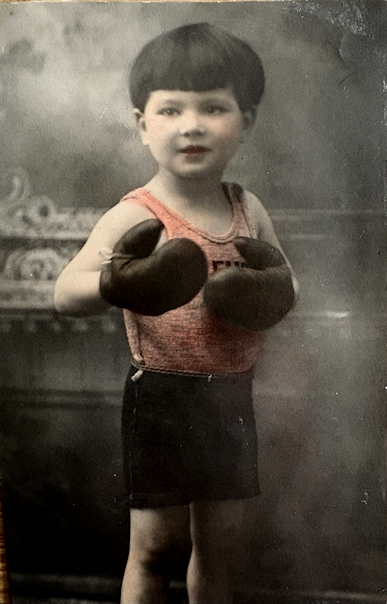

After being discharged from the Army, he enrolled at the University of Miami on the G.I. Bill, drawn to its warmer weather compared to freezing Buffalo and the promise of “pretty girls.” He won a talent contest, and his buddies chipped in for a trip to New York City for an appearance on the Arthur Godfrey Talent Scouts show. He came in fourth place but decided to stay in New York with the $600 honeymoon money from his recent marriage to Rita Bachner, a beautiful fitting model also from Buffalo.
Rita’s family wasn’t exactly in favor of the marriage. Dick was a “crazy, unemployed kid who had a yen for show business.” Rita, on the other hand, had nice, quiet, Orthodox parents. Her father was in the produce business and president of a Buffalo synagogue. But Rita stood by Dick. He soon changed his name to Dick Shawn, inspired by dancer Ted Shawn. “I didn’t have a routine or a joke. I knew from nothing. I didn’t work for a year. I don’t know what I did except collect unemployment. I don’t know how we ate. We were always hungry.” (Morton Mockridge, World Telegram Magazine, 1958).
While working to write an act, Shawn sought small club jobs, relying on Rita’s salary as a clothing model to pay their $40-a-month rent for a one-room Brooklyn apartment. With no furniture, Shawn convinced Rita that sleeping on the
floor would improve her posture. One morning, she awoke after sleeping on newspapers, with the comic strips imprinted on her back! After being turned down at club after club, Shawn finally got a call from an agent who had seen him
months earlier. He was offered a New Year’s Eve job on Long Island. “The fee was $15. Rita and I went out there, and it was horrible. It was a broken-down restaurant, and I think half the people were on opium.” (Phillip Minoff, Cue,
November 14, 1953). But he stuck it out, and more small jobs followed. Comedy seemed natural. “It was easier to talk to 500 people than to one.”
An agent who had seen him on Arthur Godfrey Talent Scouts invited Shawn to audition for a new play headed for Broadway. He made his Broadway debut in 1948 in For Heaven’s Sake, Mother with Molly Picon. Joining Actor’s Equity, he
earned $100 a week and thought he’d made it! Although the play had a short run, it led to nightclub offers.
Shawn also received valuable training at the Tamiment Resort in Pennsylvania’s Pocono Mountains, a sketch comedy haven that helped sharpen the talents of performers like Danny Kaye, Carol Channing, and Imogene Coca. “The training at Tamiment was my real education. We lived in log cabins. The newcomers I worked with included Neil Simon, Artie Johnson, Bea Arthur, and Jerry Bock, who later wrote the music for ‘Fiddler on the Roof.’” (The Bergen Evening Record, December 7, 1975).

